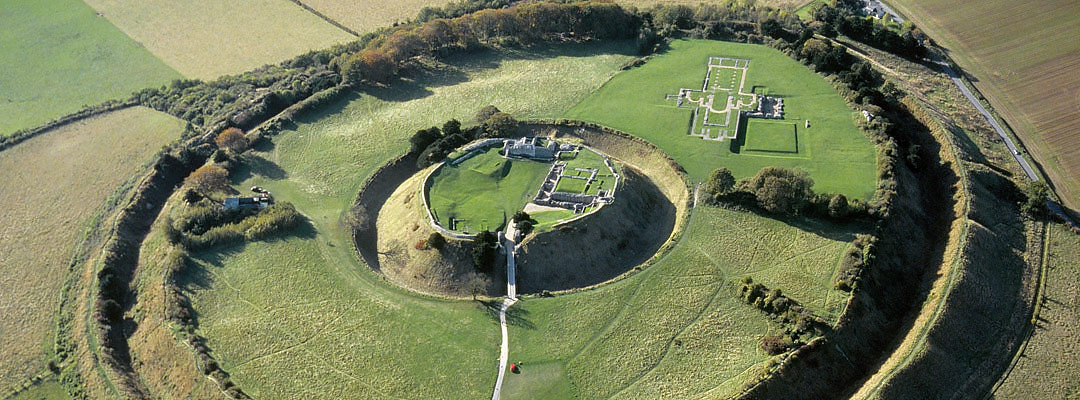William the Conqueror and the Oath of Sarum
How William I used Old Sarum to establish a radical new framework of loyalty, which may also have been linked to the great Domesday survey.

NORMAN SUPREMACY
In 1086, William I summoned all the powerful men of the realm to Old Sarum, the royal castle he had built within the massive Iron Age hillfort there.
It was to be the stage for a grand ceremony which underlined his position as the source of tenure of all land across England – a striking assertion of royal power.
CHURCH AND STATE
William seems to have decided soon after the Norman Conquest to build a castle in the middle of the earthworks at Old Sarum. This was to transform the site, effectively dividing the hillfort in two: an inner set of fortifications which became his castle, and a huge outer enclosure, within which a cathedral was also built.
It was the ideal ceremonial meeting place. The outer enclosure of the hilltop site could accommodate large numbers. Old Sarum also lay at a junction of six Roman roads, and the castle was second only to Winchester as a centre of royal government.
PAYOFF OR PRISON
Just four years after the Conquest, in 1070, William had gathered his troops at Old Sarum to pay them off after a relentless campaign to subdue northern England, known as the Harrying of the North.
He lavished rewards on the soldiers, praising those who had shown particular prowess, before discharging them. Those who had complained about the hardships suffered during the campaign were detained for 40 days after their more stoical comrades left, as a punishment. The success of this demonstration of authority may well have encouraged William to choose Old Sarum for the ceremony held here 16 years later.
THE OATH OF SARUM
So, on 1 August 1086, William hosted a great gathering at Old Sarum. According to the royal chronicler:
his council came to him there, and all the landholding men of any account throughout England, whosesoever men they were. And they all bowed to him and became his men, and swore oaths of fealty to him, that they would remain faithful to him against all other men.
All the landholders ‘of any account’ would have included not only the king’s 170 tenants-in-chief, but at least some of their subtenants. Not only was this an act of homage on a scale unseen before either in William’s native Normandy or in England, but it also established a direct – and strikingly novel – bond between the king and these subtenants.
1086 was a period of crisis, when the Conqueror was facing revolt and invasion. William’s oath insisted that from then on, if one of the powerful men of the realm were to rebel against the Crown, the primary loyalty of his subtenants would be to the king rather than to their immediate master.
DOMESDAY SURVEY
There is another reason why William may have chosen this ancient site for his ceremony. It seems unlikely to be pure coincidence that Old Sarum was where the returns from the Domesday survey were collated – the great administrative exercise which, 20 years after the Conquest, recorded who held land, be they French settlers or native Englishmen, across the vast majority of the kingdom.
By the summer of 1086 this process would have been completed and its results available to the king. This may have been deliberately timed to coincide with the ceremony on 1 August, to emphasise the fact that all land tenure depended ultimately on the king.
A dramatic demonstration of William’s right to the loyalty of his subjects, the oath set a seal on the Norman Conquest of England.
Based on the English Heritage Red Guide to Old Sarum, by John McNeill